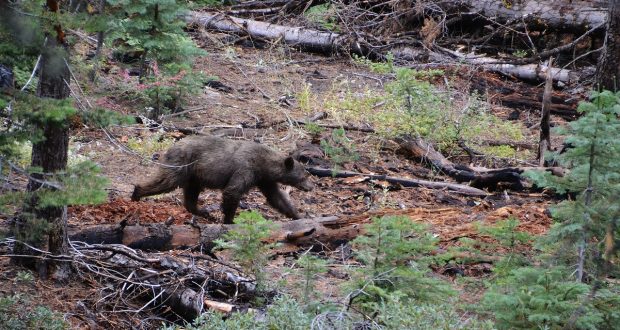YOSEMITE — Compared to this week in 2017 (the lowest year on record for bear incidents), park rangers say bear incidents in 2018 are down by 63% and damage amounts (in dollars) are down by 39%.
Compared to this week in 1998 (when incidents in the park peaked), bear incidents in 2018 are down by 99%, and damages are down by 99.7%.
Bear Activity Summary: The beginning of June marked the first bear incidents in Yosemite including a bear damaging an unoccupied tent at the Crane Flat Campground, an unattended pack in Yosemite Valley and another pack at Lake Vernon. These incidents occurred because food or attractants (items that smell including in opened or unopened packaging) were left unattended.
Even with fewer bear incidents than usual, bear activity is still relatively high throughout the park. Bears have been reported in all major areas of the park, and much of the wilderness. When out hiking or camping in bear country, it is important to always keep food within arm’s reach or to store food properly in a sealed bear resistant canister or food storage locker.
Red Bear, Dead Bear: A bear was hit by a vehicle on the Glacier Point Road. Please help protect wildlife by obeying speed limits and being prepared to stop for animals in roadways. A map of bear-hit-by-vehicle hotspots, along with other Yosemite Bear Information can be viewed at: www.KeepBearsWild.org.
Fascinating Bear Fact: Bears shed calluses on the soles of their feet when they hibernate, so when they first emerge from their den, a bear’s paws are very sensitive.
Please report bear incidents and sightings. Call the Save-A-Bear Hotline at 209-372-0322 or e-mail yose_bear_mgmt@nps.gov.
Other Wildlife Sightings: This week marked the first fawns of the season being born in Yosemite Valley. Fawns are born relatively scentless and are camouflaged to hide from predators. When approached by a human their natural response is to remain still and silent, and try to hide. Adult female deer do not remain close to their fawns in order to prevent drawing attention to them, but do return throughout the day to nurse. If you find a fawn, keep your distance and do not approach it. Its mother will be back for it. If you disturb or move a fawn, the mother will not be able to find it.
2017 Total Bear Incidents: 3
2017 Total Property Damage: $450
C. Lee-Roney




